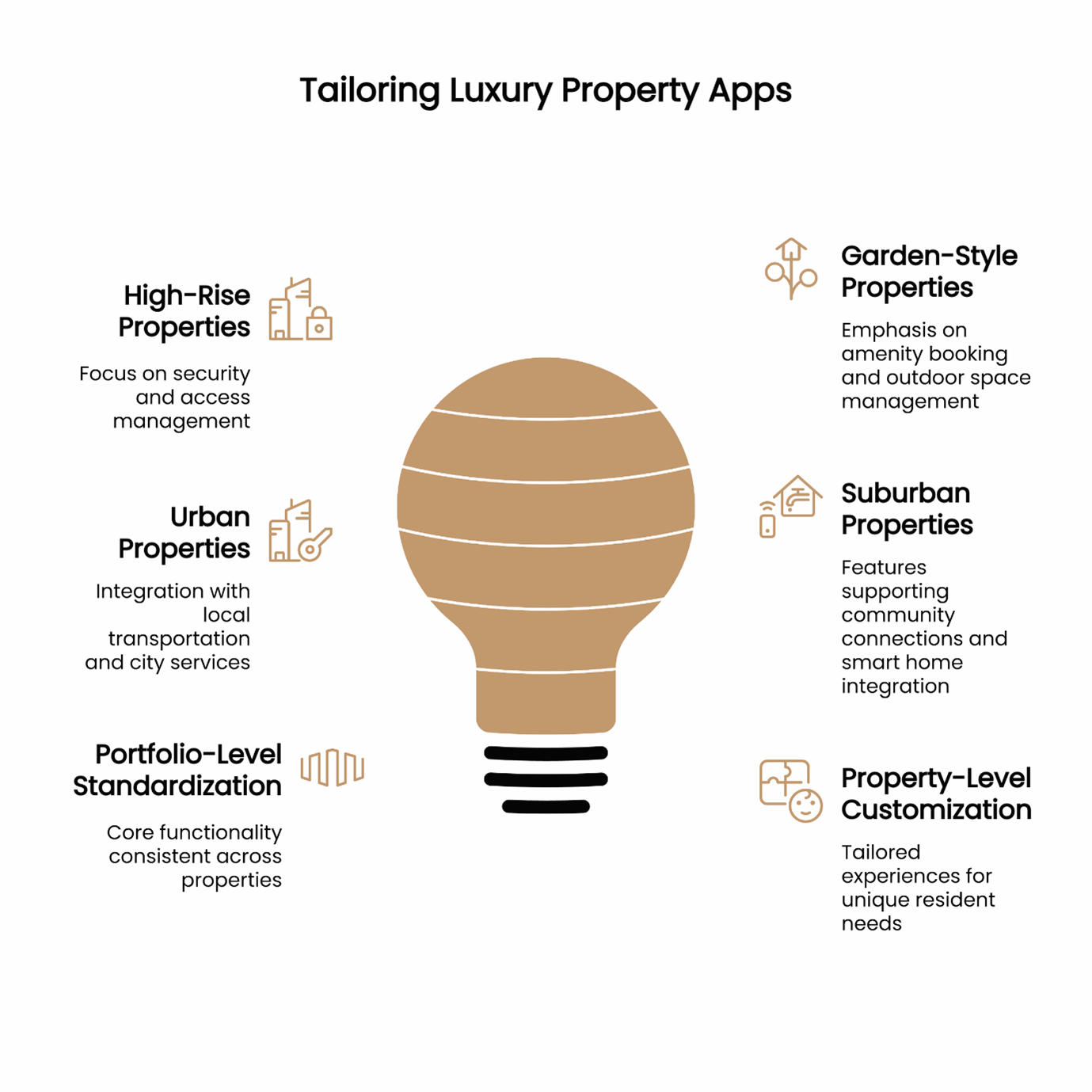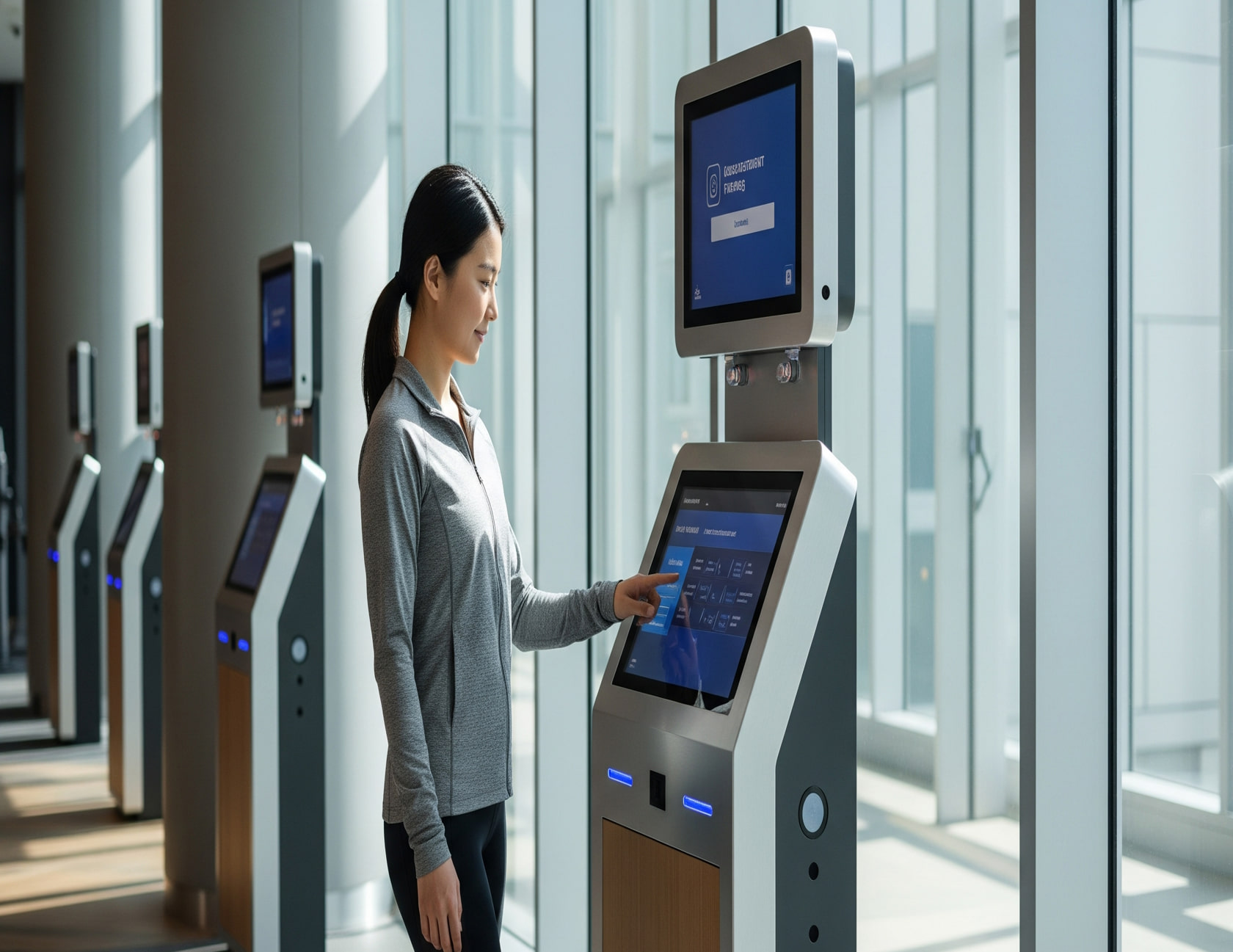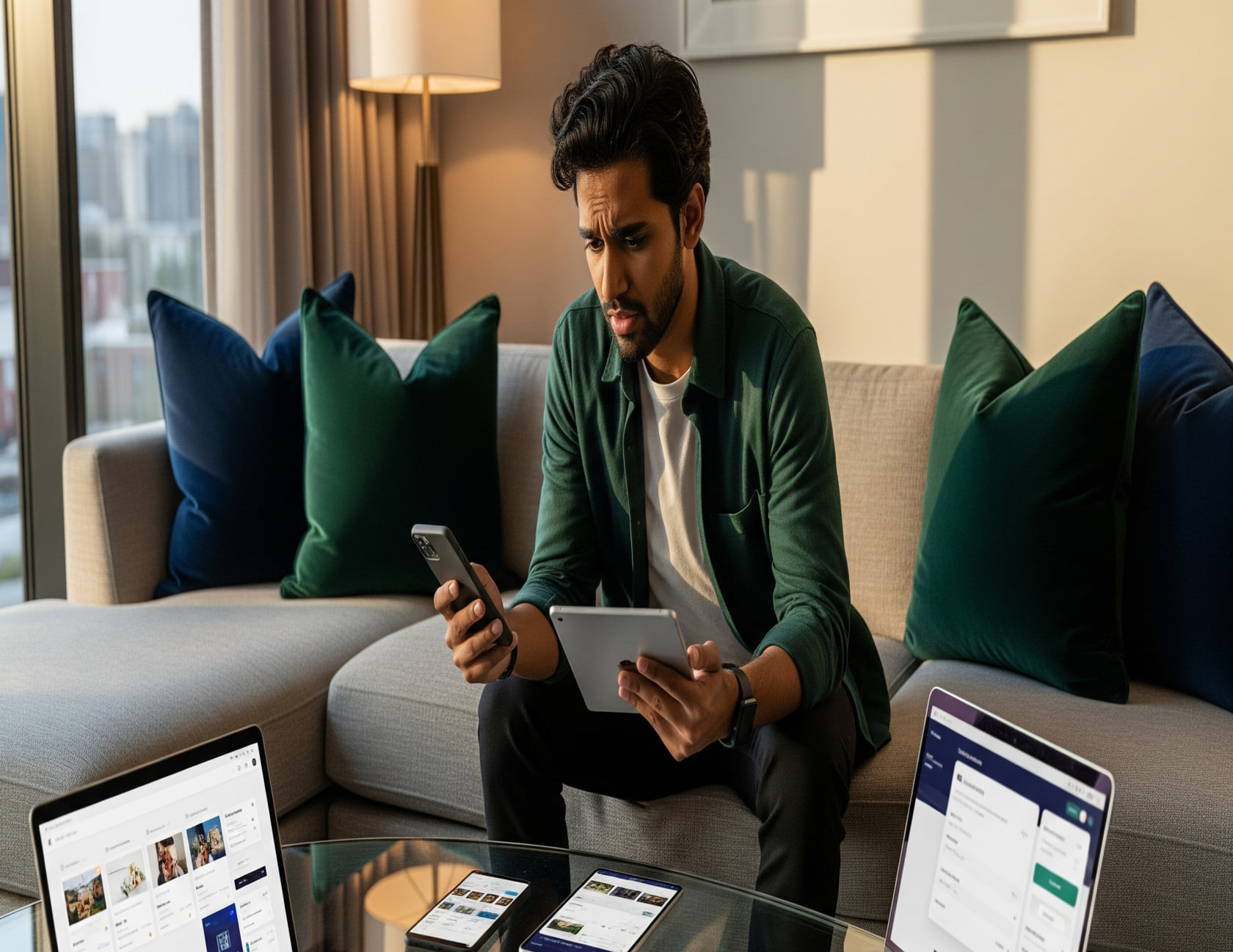
Key Takeaways:
- Strategic Value: Customized resident apps reinforce a property's luxury brand identity while creating operational efficiencies that allow staff to focus on meaningful resident interactions rather than routine administrative tasks.
- Property-Specific Approach: Different property configurations (high-rise, garden-style, urban, suburban) require tailored customization strategies that address unique operational characteristics and resident priorities specific to each environment.
- Resident Segmentation: Effective customization requires understanding different resident archetypes (career-focused professionals, affluent empty nesters, luxury lifestyle enthusiasts, relocating residents) and their behavioral patterns to prioritize relevant features.
- Implementation Framework: Successful implementation follows a structured approach using customization matrices for decision-making, seamless integration with existing property management systems, and phased implementation to minimize disruption.
- Portfolio Balance: Management companies overseeing multiple Class A properties must balance brand consistency with property-specific customization through a tiered approach that maintains core functionality while allowing for local adaptations.
The most effective customization strategies transform resident apps from basic utilities into powerful tools for differentiation and retention in the competitive luxury multifamily market.
The relationship between tailored digital experiences and resident satisfaction in luxury communities extends far beyond simple convenience. For Class A property managers, a customized resident app represents a strategic asset that directly impacts both operational efficiency and resident retention.
Luxury residents expect their digital experiences to mirror the premium nature of their physical environment. A thoughtfully customized app serves as an extension of your property's brand, reinforcing the high-end positioning that distinguishes your community from competitors. Digital experiences have become increasingly important factors in how residents evaluate and select communities, with many considering the technological offerings when making their final decision.
From an operational perspective, customized resident apps create efficiencies that benefit both residents and staff. Your property teams can focus on high-value interactions rather than routine administrative tasks, enhancing service delivery while maintaining streamlined operations. When thoughtfully implemented, digital resident engagement systems show positive impacts on property performance metrics.
[ILLUSTRATIVE EXAMPLE]
A luxury high-rise in downtown Chicago implemented a resident app customized specifically for their professional resident demographic. Rather than using a generic solution, they configured the system to prioritize amenity booking for their co-working spaces, integrated smart home controls for their tech-forward units, and created a specialized module for coordinating with their white-glove concierge service. The result was not just higher app adoption rates, but staff reported a 30% reduction in routine inquiries, allowing them to focus on more meaningful resident interactions.
[END EXAMPLE]
+----------------------------------------------------------------------+
💡 Quick Takeaways
- Strategic positioning: Customized resident apps reinforce your property's luxury brand identity while meeting residents' evolving expectations for seamless digital experiences.
- Operational impact: Tailored app solutions enhance staff efficiency by automating routine tasks and enabling more meaningful resident interactions.
- Competitive advantage: Properties that invest in customization create digital experiences that distinguish them in the competitive Class A market.
+----------------------------------------------------------------------+
Understanding Your Property's Unique Customization Requirements

Different luxury property configurations demand different app customization approaches. High-rise, garden-style, urban, and suburban properties each present distinct operational characteristics and resident priorities that should inform your customization strategy.
High-Rise vs. Garden-Style Luxury Community Considerations
High-rise luxury properties typically require robust access management solutions within their resident apps. Your residents need streamlined methods to grant access to visitors, service providers, and deliveries without compromising security. Research from McKinsey & Company confirms that safety and security features are among the most valued technology amenities in residential properties, with renters reporting a willingness to pay 1.0 to 5.0% more in rent for smart security features. McKinsey's 2024 research on real estate tech adoption shows security features can command 1-5% rent premiums, with multifamily tech investments potentially leading to 2-4% NOI increases.
In contrast, garden-style luxury communities often emphasize amenity booking and outdoor space management. With more expansive grounds, these properties require app features that assist residents in navigating and utilizing community spaces efficiently. Location-specific push notifications and geofencing capabilities can enhance resident experience in these more spread-out environments.
Urban vs. Suburban Property Customization Differences
Urban luxury properties benefit from app customizations that address the specific challenges of city living. Integration with local transportation information, partnerships with nearby businesses, and solutions for coordinating deliveries in busy environments add significant value. Creating a premium experience in urban settings means delivering appropriate services in contextually relevant ways that align with city dwellers' needs and expectations.
Suburban luxury communities often serve residents with different lifestyle priorities. These apps should emphasize features supporting community connections, amenity calendar management, and potentially integration with smart home technologies that appeal to residents who spend more time in their homes.
Ever notice how suburban dwellers want different tech? Research from Rent.com's 2022 Smart Home Technology survey found striking differences in technology preferences between apartment and home residents, with suburban properties often requiring different technology prioritization. Rent.com's 2022 Smart Home Technology survey of 1,546 renters found 82% want smart devices, with home dwellers (56%) more likely than apartment residents (49%) to currently use smart technology.
Portfolio-Level Standardization vs. Property-Level Customization Balance
For management companies overseeing multiple Class A properties, striking the right balance between brand consistency and property-specific customization is crucial. Establishing a standardized framework that allows for property-level modifications provides operational efficiency while still meeting unique community needs.
Consider implementing a tiered customization approach:
- Core functionality remains consistent across all properties
- Property-specific visual branding and content adaptation
- Location-specific integrations with local services and amenities
- Demographic-based feature prioritization based on each property's resident profile
This balanced approach ensures operational efficiency while still delivering tailored experiences that resonate with each property's unique resident base. Industry research supports this strategy, with a 2024 RealPage study noting that a "resident-centric" approach through technology is no longer just nice to have but "a strategic imperative tied to tangible outcomes." RealPage's 2024 research revealed that satisfied residents are twice as likely to renew their lease, with technology-enabled experiences directly impacting financial performance.
+---------------------------------------------------------------------+
💡 Quick Takeaways
- Property configuration matters: High-rise, garden-style, urban, and suburban luxury communities each require different app customization strategies.
- Physical environment shapes digital needs: The physical layout and amenity offering of your property should directly inform app customization priorities.
- Balance is key: For multi-property portfolios, establish a framework that maintains operational consistency while allowing for property-specific customizations.
+---------------------------------------------------------------------+
Resident Segmentation Strategies for Effective App Customization
Understanding who your residents are and what they value is fundamental to effective app customization. Sophisticated resident segmentation allows you to create tailored digital experiences that resonate with different user groups within your luxury community.
Demographic and Psychographic Profiles of Luxury Residents
Class A properties typically serve several distinct resident archetypes, each with different needs and expectations. Common luxury resident segments include:
Career-Focused Professionals: Typically younger residents who prioritize convenience, time-saving features, and integration with their busy lifestyles. They value seamless technology experiences and quick response times.
Affluent Empty Nesters: Often transitioning from larger homes, these residents seek community connections, wellness amenities, and high-touch service features. They may require more intuitive digital experiences and appreciate concierge-style digital assistance.
Luxury Lifestyle Enthusiasts: These residents specifically choose luxury communities for the experience and are typically heavy users of amenities and services. They expect their digital experience to match the premium nature of the physical property.
International or Relocating Residents: Often temporarily residing in luxury communities, these residents benefit from community orientation features, local area information, and possibly multi-language support.
Understanding the composition of your specific community allows for meaningful customization of the user experience to address the primary needs of each segment. The 2020 NMHC/Kingsley Apartment Resident Preferences Report, which surveyed nearly 373,000 multifamily residents, found that digital amenities are increasingly influencing rental decisions, with 43% of residents stating they were interested in or would not rent without voice-activated virtual assistants. The 2020 NMHC/Kingsley Apartment Resident Preferences Report surveyed 373,000 renters and found 43% were interested in or would not rent without voice-activated virtual assistants like Amazon's Alexa or Google Home.
Behavioral Segmentation Based on Amenity Usage and Lifestyle Preferences
Beyond basic demographics, effective customization should account for actual usage patterns and lifestyle preferences. Analyze how different resident groups interact with your property:
- Which amenities do different segments use most frequently?
- What service requests are common among specific resident groups?
- When and how do various segments prefer to communicate with management?
- Which community events attract different resident populations?
This behavioral data enables you to prioritize features that put the most relevant functions front and center for each user group. J Turner Research's analysis of apartment resident satisfaction surveys found that quality of communication and responsiveness to maintenance requests significantly impact renewal decisions, making it crucial to tailor digital services to resident preferences.
[ILLUSTRATIVE EXAMPLE]
A downtown luxury apartment building noticed that their resident population naturally divided into three distinct usage patterns within their app. Morning users primarily accessed fitness center scheduling and package pickup features. Daytime users focused on service requests and amenity bookings. Evening users were most interested in social events and local dining information. The property implemented a dynamic interface that automatically adjusted based on time of day and user history, highlighting the most relevant features for each context. This time-based customization approach increased overall engagement by making the app more immediately useful to residents throughout their day.
[END EXAMPLE]
Data-Driven Approaches to Identifying Customization Priorities
Implementing a data-driven customization strategy requires systematic collection and analysis of resident information and behavior:
- Conduct targeted resident surveys to identify preferences and priorities among different segments
- Analyze existing app usage data to understand which features currently receive the most engagement
- Review service request patterns to identify common pain points and opportunities for improvement
- Monitor amenity utilization to determine which spaces and services are most valued
- Collect feedback through structured channels within the app to enable continuous improvement
This data should inform both initial customization decisions and ongoing refinements to your resident app experience. Properties that implement preventative maintenance systems driven by data analytics generally see improvements in resident satisfaction metrics compared to properties without such approaches.
+-------------------------------------------------------------------+
💡 Quick Takeaways
- Resident archetypes guide customization: Identify the primary resident segments in your community and tailor digital experiences to their specific needs.
- Behavior reveals priorities: Usage patterns provide critical insights into what features will create the most value for different resident groups.
- Data drives decisions: Implement systematic data collection to inform both initial customization and ongoing refinements to your resident app.
+--------------------------------------------------------------------+
Implementation Frameworks for Different Property Types
Successfully implementing customized resident app experiences requires thoughtful planning and execution. The following frameworks provide structured approaches for different luxury property configurations.
Customization Matrices for Various Luxury Property Configurations

When determining customization priorities, consider using a matrix approach that evaluates features against property characteristics and resident demographics. This allows for systematic decision-making about which customizations will deliver the greatest value.
For high-rise luxury properties, prioritize:
- Sophisticated access management systems
- Elevator control integration
- Package delivery coordination
- Amenity booking for limited-capacity spaces
- Digital concierge functionality
For garden-style luxury communities, emphasize:
- Property navigation and wayfinding
- Outdoor amenity management
- Maintenance coordination for distributed units
- Community-building features
- Smart home integration
Urban luxury properties benefit from:
- Local service partnerships and integration
- Transportation information
- Enhanced security features
- Event calendars with nearby attractions
- Delivery management solutions
Suburban luxury communities should focus on:
- Family-oriented amenity booking
- Community event coordination
- Resident clubs and interest groups
- Smart home technology integration
- Local service recommendations
Each property should evaluate these priorities against their specific resident demographics to create a customization roadmap that delivers maximum value. According to Parks Associates' "Smart Home and MDUs: The Property Manager View" research, properties with integrated smart home technology are seeing significant financial benefits, with 95% of property managers reporting that smart home devices can increase rental fees by between 5% and 30%. Parks Associates' "Smart Home and MDUs: The Property Manager View" study found 95% of property managers reported that smart home technologies can command rental premiums of 5-30%.
Integration Strategies with Existing Property Management Systems
Successful resident app customization requires seamless integration with your existing property management infrastructure. Consider these integration approaches:
API-Based Integration: Establish direct connections between your resident app and core property management systems to enable real-time data exchange and functionality.
Middleware Solutions: For legacy systems with limited integration capabilities, middleware platforms can create bridges between different technology components.
Unified Data Architecture: Implement a centralized data repository that connects various systems and ensures consistent information across platforms.
Phased Integration Approach: Begin with core functionalities and gradually expand integration points based on resident priorities and technical feasibility.
Work closely with technology partners who understand the luxury multifamily space and can accommodate the specific requirements of Class A properties. A Multi-Housing News study on smart home technology adoption in multifamily properties found that properties achieving successful integrations experienced a 3-5% rise in property valuation and an average 30% ROI on their technology investments. Multi-Housing News research documented that properties with well-integrated smart technology experienced a 3-5% increase in property valuation and an average 30% ROI on their technology investments.
[ILLUSTRATIVE EXAMPLE]
A luxury waterfront property in Miami implemented a phased customization approach for their resident app. They began by integrating basic functions with their property management system for payments and maintenance requests. In the second phase, they added amenity booking capabilities tailored to their extensive pool deck and spa facilities. The third phase introduced smart home controls for their premium units. By staging implementation, they were able to test adoption and refine the experience at each step, resulting in a highly tailored solution that achieved 85% regular engagement among residents while maintaining operational efficiency for staff.
[END EXAMPLE]
Phased Implementation Approaches for Minimal Disruption
Implementing customized resident app experiences should be approached methodically to minimize disruption and maximize adoption:
- Assessment Phase: Evaluate current systems, resident needs, and operational requirements
- Planning Phase: Develop a customization roadmap with clearly defined priorities and timelines
- Core Implementation: Deploy fundamental features with direct operational impact
- Expansion Phase: Gradually introduce enhanced customizations based on resident feedback
- Optimization Phase: Continuously refine the experience based on usage data and evolving needs
This phased approach allows for proper testing, staff training, and resident education at each stage, increasing the likelihood of successful adoption. A study by CEPRO on smart home technology in multifamily buildings found that 87% of property managers expect to achieve a return on their smart technology investments within two to three years when using a strategic, phased implementation approach. CEPRO's study on smart home technology adoption in multifamily properties found 87% of property managers expect ROI within 2-3 years when using phased implementation approaches.
+-----------------------------------------------------------------+
💡 Quick Takeaways
- Structured decision-making: Use customization matrices to systematically evaluate which features will deliver the most value for your specific property configuration.
- Integration is essential: Successful implementation requires thoughtful connection with existing property management systems.
- Phased approach works best: Gradual implementation allows for testing, refinement, and proper education at each stage.
+-------------------------------------------------------------------+
Conclusion
Successful resident app customization for Class A properties requires a strategic approach that considers both property configuration and resident demographics. By understanding the unique needs of your luxury community and implementing tailored digital experiences, you can enhance resident satisfaction, streamline operations, and strengthen your competitive position in the market.
The most effective customization strategies are those that balance standardization with property-specific adaptations, implement features based on data-driven insights, and continuously evolve to meet changing resident expectations. The 2024 NMHC and Grace Hill Renter Preferences Survey Report, featuring input from 172,703 renters across 4,220 communities, confirms that properties investing in resident experience technology see measurable improvements in satisfaction, with 85% of respondents reporting they enjoy living in communities with well-implemented technology solutions. The 2024 NMHC and Grace Hill Renter Preferences Survey Report found 85% of respondents enjoy living in communities with well-implemented technology, demonstrating direct connections between tech investment and resident satisfaction.
Take time to evaluate your current resident app approach against the frameworks presented in this article. Identify opportunities to enhance customization based on your specific property characteristics and resident profile. By implementing a strategic customization plan, you can transform your resident app from a basic utility into a powerful tool for differentiation and retention in the competitive luxury multifamily market.
Frequently Asked Questions (FAQs)
Q: How do we balance standardization across a portfolio with property-specific customization needs?
A: Establish a core framework of essential features and functionality that remains consistent across all properties while allowing for customization in three key areas: visual branding, property-specific content, and feature prioritization. This approach maintains operational efficiency while still delivering tailored experiences. Create clear guidelines for which elements must remain standard and which can be customized at the property level. Regularly review customization decisions to ensure they align with both brand standards and resident expectations.
Q: What integration challenges should we anticipate when implementing customized resident app experiences with our existing property management system?
A: Integration challenges typically revolve around data synchronization, access control compatibility, and user authentication. Legacy property management systems may have limited API capabilities, requiring middleware solutions or custom development.
Prioritize early assessment of your current systems to identify potential integration points and limitations. Work with technology partners experienced in multifamily integrations, particularly those familiar with Class A property requirements. Plan for a phased implementation approach that allows for testing and troubleshooting at each stage to minimize disruption.
Frequently Unasked Questions (FUQs)
Q: How can we leverage usage data from our current resident app to inform our customization strategy?
A: Analyze app engagement metrics to identify which features currently receive the highest and lowest usage among different resident segments. Look for patterns in peak usage times, feature combinations, and abandonment points to understand how residents actually interact with your digital experience. This data can reveal opportunities for customization that may not be apparent from surveys or feedback alone.
Q: What role should property staff play in the customization process to ensure adoption success?
A: Property staff should be engaged throughout the customization process as both stakeholders and advocates. Include on-site teams in initial discovery sessions to understand operational pain points and resident feedback they receive directly. Create opportunities for staff to test customized features before full implementation.
Develop comprehensive training programs that help staff understand not just how to use the system, but how to effectively communicate its benefits to residents. Establish clear feedback channels for staff to report issues and suggest improvements based on real-world usage. Position staff as digital concierges who can help residents take full advantage of customized app features.
Disclaimer: This content is for informational purposes only and not intended as business advice. No business relationship is formed through this content. The information provided does not replace professional consultation. Please consult qualified business advisors for guidance specific to your organization's situation.
Elevate Resident Expectations—Digitally
Discover how ElevateOS’s customizable Resident App can transform your luxury community into a seamless digital experience that mirrors the premium quality of your physical spaces. Our platform helps you enhance operational efficiency, boost resident satisfaction, and increase retention—all while staying aligned with your brand’s high standards.
✨ Experience the Key Benefit: Deliver curated digital experiences that simplify daily resident interactions, reduce staff workload, and create meaningful, tech-enabled engagement in your Class A community.
👉 Ready to see it in action? Request a demo today and discover how our Resident App can help you craft a next-level digital experience your residents will love.
🔗 Let’s Stay Connected
Follow ElevateOS for more insights on luxury property technology and digital resident engagement:

.avif)


